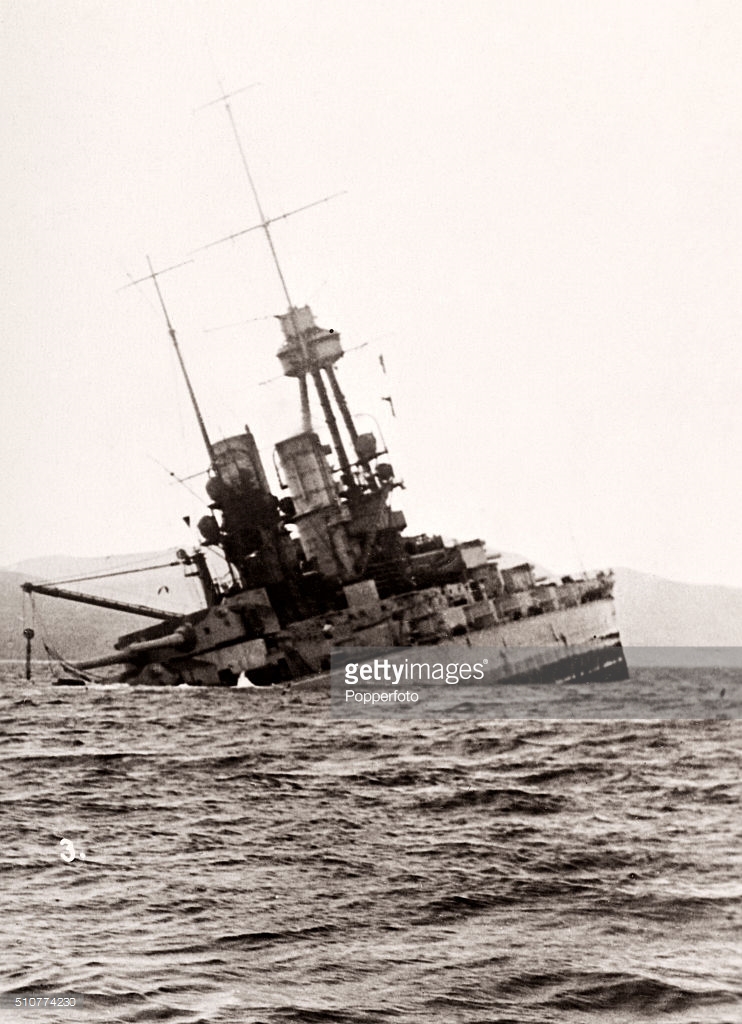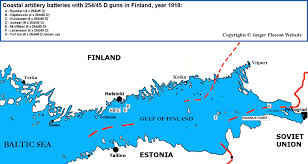Million Railway Workers on Strike,
Block Movement of Troops to the Front
Germans Using Storm-Troop Tactics
Special to The Great War Project.
(9 October) More turmoil in Russia these days a century ago.
At this moment, the Germans are expecting the entire Eastern Front to collapse. On October 8th, more than a million Russian railway workers go on strike, making the movement of troops to the front virtually impossible,” reports historian Martin Gilbert.

German battleships at sea.
Bolshevik agitation has taken firm hold and is making other operations at the front and at sea virtually impossible. The Germans launch an operation against Russian-held islands in the Baltic Sea, in both the Gulf of Riga and the Gulf of Finland.
These two bodies of water border the approach to Latvia and Finland, and beyond to Petrograd, the Russian capital.
“The Germans introduced new methods,” writes historian Michael Neiberg, “in a series of Baltic offensives that proved to be the beginning of the end for the liberal Kerensky’s provisional government” in Petrograd.
The Germans use amphibious warfare to capture islands, but the real innovations came on land.

German battleship hit by mine in Gulf of Riga.
They developed so-called ‘storm troop’ tactics. “All armies had been working on something similar,” reports Neiberg, “but at Riga [in the Baltic] the Germans successfully put all the pieces together for the first time.”
They form an armada of warships, “including eleven battleships, and nineteen steamers, carrying 23,000 soldiers and 5,000 horses.”
Russian defense of the islands had become impossible, reported the admiral in command, because the sailors had turned revolutionary. He later writes, “The influence of Bolshevik propaganda on the masses is enormous.”
“I was defending one island,” he reports, “and the troops actually melted away before my eyes.” The Germans occupy the island, and take another 5,000 Russian prisoners.
Elsewhere in the naval approaches to the Russian capital, Petrograd, the Russians fear the possibility that the Germans will mount an amphibious landing in the Gulf of Finland. The Germans have their sights on Finland and the agitation there for Finnish independence.
Attacking the islands gives the Germans the ability to “drive the unstable politics in Petrograd closer to collapse.”
So the Germans quickly assemble Operation Albion, “an enormous concentration of German naval power, intended to seize an archipelago of small islands in the approach to Petrograd, in a further blow at a tottering Russia.”
They throw ten battleships into the fight, along with numerous other smaller warships, intended to transport 25,000 soldiers.
Initially, the fighting did not go well for the invading Germans, but eventually the Germans seize the initiative, forcing the Russians in key positions to surrender.
Reports historian Gilbert, “while the German army was making quick work of Russian defenders on the islands, the German navy was clearing the waters of Russian ships.”
Soon the Germans had cleared all resistance.

Gulf of Finland borders Finland and Estonia.
It was to be Imperial Russia’s “last campaign in the First World War.”
“A new Soviet Russia was about to take its place.”
